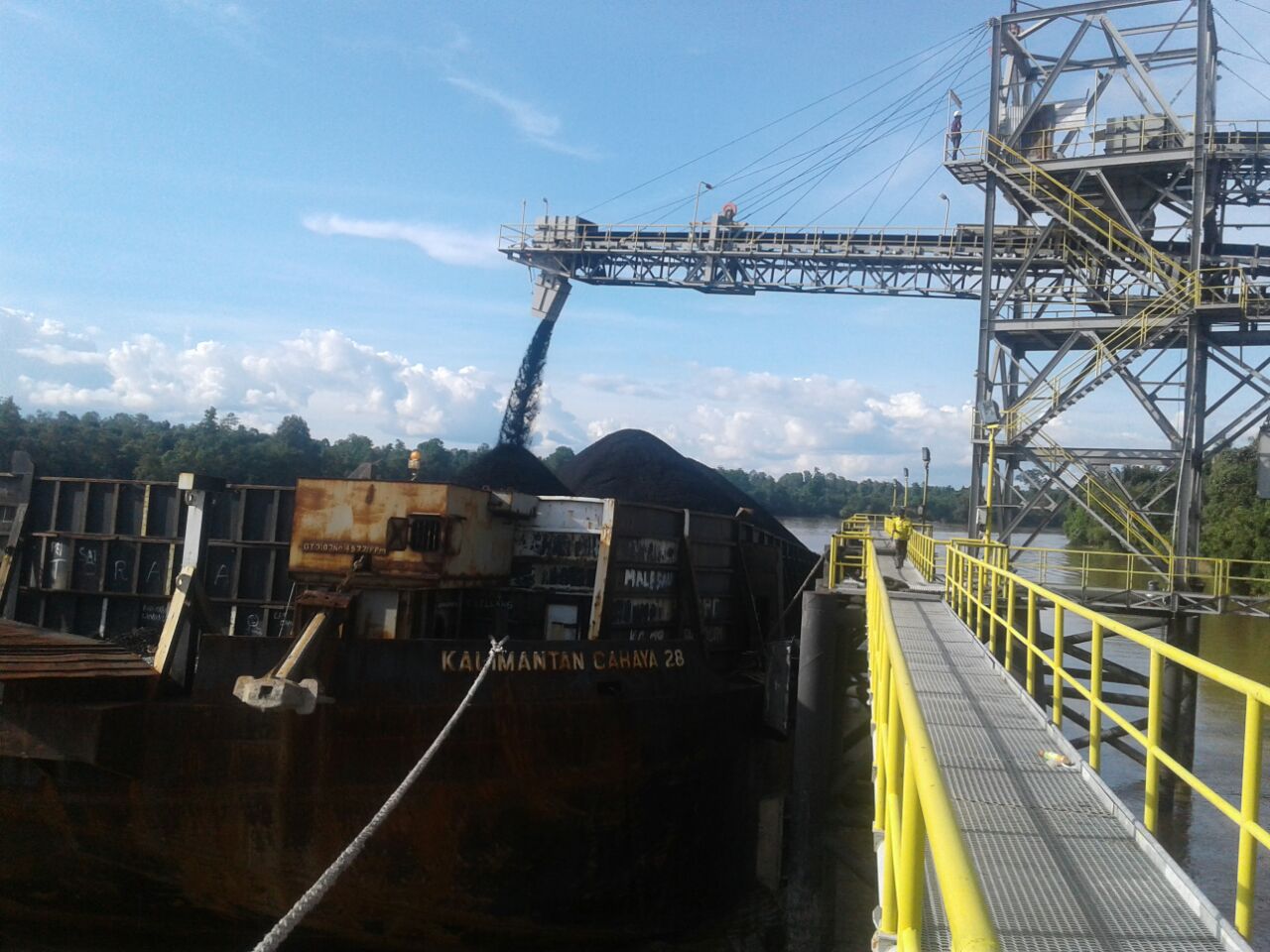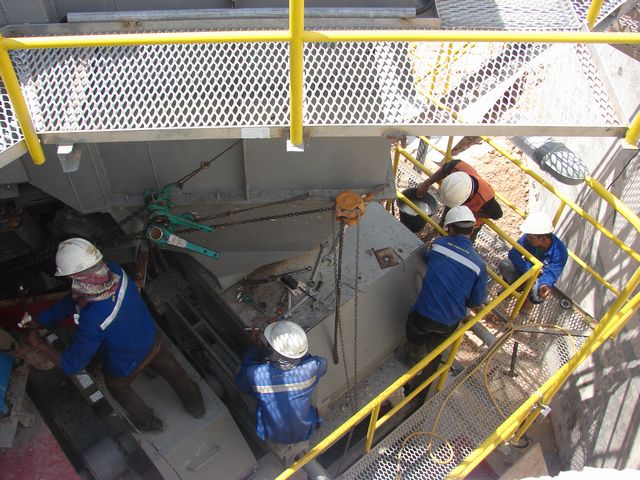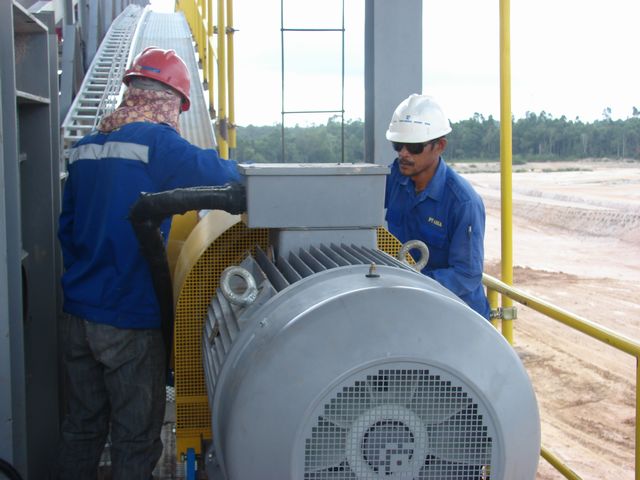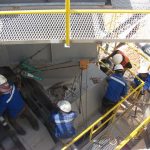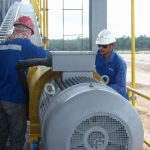Maintenance and Operational Services
We, PT Asia Development Engineering has employing team of experienced professionals, with recognized expertise in conveying, crushing, stockpiling, reclaiming, load out system, means that We can deliver an integrated design, construction, maintenance and operation package for your surface handling requirements.
Partnerships with key industry specialists can allow us to co-ordinate, operate and deliver world class solution to stockpile, feeding, reclaim, and load out projects.
A project delivery method is a system used by an agency or owner for organizing and financing design, construction, operations, and maintenance services for a structure or facility by entering into legal agreements with one or more entities or parties.
Types of Project Delivery Methods we can offer
Common project delivery methods include:
- Design-Bid-Build (DBB) or Design-Award-Build (DAB)
An owner develops contract documents with an architect or engineer consisting of a set of blueprints and a detailed specification. Bids are solicited from contractors based on these documents; a contract is then awarded to the lowest responsive and responsible bidder.
- DBB with Construction Management (DBB with CM)
With partially completed contract documents, an owner will hire a construction manager to act as an agent. As substantial portions of the documents are completed, the construction manager will solicit bids from suitable subcontractors. This allows construction to proceed more quickly and allows the owner to share some of the risk inherent in the project with the construction manager.
- Design-Build (DB) or Design-Construct
An owner develops a conceptual plan for a project, then solicits bids from joint ventures of architects and/or engineer and builders for the design and construction of the project.
- Design-Build-Operate-Maintain (DBOM)
DBOM takes DB one step further by including the operations and maintenance of the completed project in the same original contract.
Though DBB is presently used for most private projects and the majority of public projects, it has not historically been the predominant delivery method of choice. The master builders of centuries past acted both as designers and constructors for both public and private clients.
Conceptual Differences between Delivery Methods
There are two key variables which account for the bulk of the variation between delivery methods:
- The extent of the integration of the various service providers.
- The extent to which the owner is directly financing the project.
When the various service providers are segmented, the owner has the most amount of control, but this control is costly and doesn’t give each provider an incentive to optimize its contribution for the next service. When there is tight integration amongst providers, each step of the delivery is undertaken with future activities in mind, resulting in cost savings, but limiting the owner’s influence throughout the project.
The owner’s direct financing of a project simply means that the owner directly pays the providers for their services. In the case of a facility with a consistent revenue stream, indirect financing becomes possible: rather than be paid by the owner, the providers are paid with the revenue collected from the facility’s operation.
Indirect financing risks being mistaken for privatization. Though the providers do have a concession to operate and collect revenue from a facility that they built and financed, the structure itself remains the property of the owner.
The term maintenance at Coal Crushing Plant and Loading Conveyor on Port facilities has the following meanings:
Any activity – such as tests, measurements, replacements, adjustments and repairs — intended to retain or restore a functional unit in or to a specified state in which the unit can perform its required functions.
For material — all action taken to retain material in a serviceable condition or to restore it to serviceability. It includes inspection, testing, servicing, classification as to serviceability, repair, rebuilding, and reclamation. All supply and repair action taken to keep a force in condition to carry out its mission. The routine recurring work required to keep a facility (plant, building, structure, ground facility, utility system, or other real property) in such condition that it may be continuously used, at its original or designed capacity and efficiency for its intended purpose.
Maintenance types
Generally speaking, there are two types of maintenance we use:
Preventive maintenance, where equipment is maintained before break down occurs. This type of maintenance has many different variations and is subject of various researches to determine best and most efficient way to maintain equipment. Recent studies have shown that Preventive maintenance is effective in preventing age related failures of the equipment. For random failure patterns which amount to 80% of the failure patterns, condition monitoring proves to be effective.
Corrective maintenance, where equipment is maintained after break down. This maintenance is often most expensive because worn equipment can damage other parts and cause multiple damage.
- Preventive maintenance
Preventive maintenance is maintenance performed in an attempt to avoid failures, unnecessary production loss and safety violations. As equipment cannot be maintained at all times, some way is needed to decide when it is proper to perform maintenance. Normally, this is done by deciding some inspection/maintenance intervals, and sticking to this interval more or less affected by what you find during these activities. The result of this is that most of the maintenance performed is unnecessary; it even adds substantial wear to the equipment. Also, you have no guarantee that the equipment will continue to work even if you are maintaining it according to the maintenance plan.
The effectiveness of a preventive maintenance schedule depends on the RCM analysis which it was based on, and the ground rules used for cost effective
- Corrective maintenance
Corrective maintenance is probably the most commonly used approach, but it is easy to see its limitations. When equipment fails, it often leads to downtime in production. In most cases this is costly business. Also, if the equipment needs to be replaced, the cost of replacing it alone can be substantial. It is also important to consider health, safety and environment (HSE) issues related to malfunctioning equipment.
Corrective maintenance can be defined as the maintenance which is required when an item has failed or worn out, to bring it back to working order. Corrective maintenance is carried out on all items where the consequences of failure or wearing out are not significant and the cost of this maintenance is not greater than preventive maintenance.

